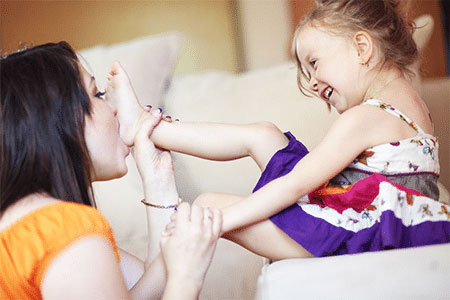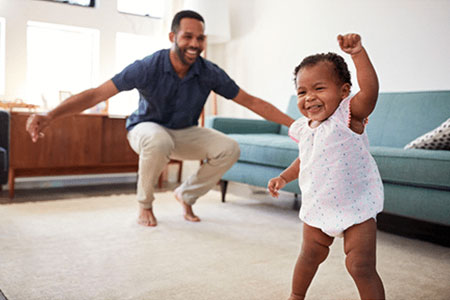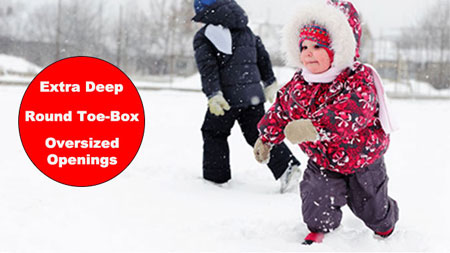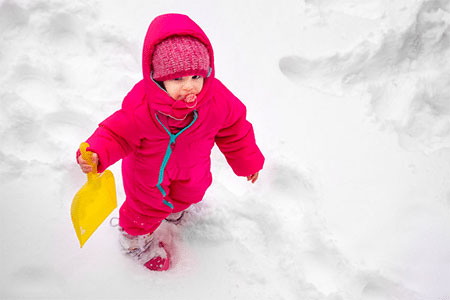Everything You Must Know About Keeping Your Kids’ Feet Healthy – Learn the 8 Most Important Facts!

The types of shoes that you choose for your children play a key role in keeping their feet and legs healthy. At the shoe store where I work, I have fitted some of the most supportive, lightweight, flexible, breathable, and durable children’s shoes but if you don’t provide your child with the correct shoe size your child won’t get any of the benefits that the shoes have to offer. By getting the correct shoe size I mean the correct shoe length and the correct shoe width, so it’s always important to find shoe styles that come in different widths such as narrow (N), medium (M), wide (W), and extra wide (XW).
8 Shoe Facts to Help Keep Your Children’s Feet Healthy
I will share with you everything that you need to know about keeping your children’s feet healthy and provide you with a selection of the best children’s shoes from their first steps up to their teenage years.
1️⃣ Your Kids’ Growing Feet Are Developing Feet!
Did you know that the foot is a complex structure comprised of 26 bones? It’s important to support and protect your kids’ feet with the correct type of shoes because bones are designed to support our entire body, adapt to uneven surfaces and absorb shock.
Babies have more cartilage than bone, which as they grow will fuse and harden into adult bones. At this stage, you should provide your baby with a pair of soft sole shoes and allow them to walk barefoot and home, that way you can promote healthy and natural foot development.
You need to provide your baby with a pair of shoes as soon as you decide to take your baby to play outside, and the shoes serve as protection purposes. If you are unsure about which shoes you should provide for your baby you should take a look at a different resource I created where I describes the best baby shoes.

Even though the structure of the foot develops fully by the first 2 years, the bones themselves don’t fully develop and harden until the child reaches the age of 18. This is the reason why it’s so important to provide your children with good shoes from an early stage, so that the bones are allowed to develop naturally.
Shoes that are too small or too narrow hinder proper foot growth by cramping the toes against one another and make them rub against the side of the shoes. This can also lead to blisters, calluses, and corns. On the other hand, shoes that are too long or too wide allow for too much foot movement inside the shoes and this constant friction also leads to the creation of blisters. Shoes that are too long or too wide can compromise your child’s stability, risking serious injury. I created a virtual shoe fitting service that will help you retrieve your child’s shoe size from home.
2️⃣ Soft Sole or Hard Sole Shoes for Your Child?
There are two opposing opinions regarding soft sole and hard sole shoes. I believe that one is not better than the other, it just depends on what stage your child is in terms of walking.
When a child is learning how to walk I always fit them in shoes that come with soft soles as we want the baby’s muscles to work to find balance and strength. We want to avoid their feet relying on the strength of the shoe, as this will impede the development of muscles in the foot and ankle.
Once the child is already walking and running they will be ready for a more supportive, substantial shoe. Hard sole shoes will help to prevent foot problems such as flat feet, pronated feet, and rolled ankles.
Soft sole shoes or hard sole shoes should be chosen depending on what stage of walking your child is going through.

3️⃣ The Younger the Foot, the Faster it Grows!
Do you feel like you are constantly replacing your kids’ shoes? Hang in there because as soon as your child reaches the age of 3 you won’t have to replace your kids’ shoes as often!
The reason why you feel like you are constantly buying new shoes is that the greatest changes in foot growth occur during the first 3 years. Relax, it only gets easier from now on.
I recommend getting your child’s foot measured at least once every three months to make sure your child is wearing the correct shoe size. Before the age of 3, you might find replacing your kids’ shoes every 3 months, but once they reach the age of 4 you can count on replacing them every 4 to 5 months — this does not include exceptions due to growth spurts.
Shoes that are too short or too narrow can deform the toes and permanently damage the foot as well as create issues such as blisters, calluses, and corns.
4️⃣ Kids’ Feet Handle More Stress Than Adults’ Feet!
Once your child starts walking and putting pressure on the feet all the time, you will have to find a pair of shoes with substantial outsoles (supportive shoes) to minimize the impact that the feet and legs take every time they become in contact with the ground.
Did you know that children’s feet experience about 3 times more stress than the average adult foot?
The reason for this is that children are involved in high activity levels and a greater proportion of high-impact activities compared to adults. Due to this high stress that a child’s foot endures, you must provide your children with shoes that provide good shock absorption, a supportive sole, and a firm heel counter.
Please don’t confuse supportive shoes with stiffer shoes. The shoes must be supportive but still lightweight and flexible enough to help your children strengthen their muscles on their own!
5️⃣ Feet Are the Foundation for Your Entire Body!
I have spoken with several foot doctors that agree that most foot problems and pains in adulthood come from wearing ill-fitting shoes when they were young.
One thing I try to always emphasize to parents is that our feet play a key role in keeping us healthy. The foot is not a separate entity, but an integral body part that supports the entire skeletal structure.
Wearing shoes that don’t properly fit puts your child at risk for injury or deformity later in life. Problems with posture, walking, and even back pain are associated with wearing the wrong type of shoes or the wrong shoe size.
6️⃣ Arch Support for Children Should be Different than Arch Support for Adults!
Has your child been diagnosed with flat feet or rolled ankles? Don’t be alarmed if you don’t notice your baby’s arch, as at that stage the arch will usually not be visible or developed until the child reaches 2 years old, and even then, it is not a fully developed arch.
This is the reason why you won’t find many babies’ and toddlers’ shoes with arch support as it is not necessary. Once your child reaches the age of 5 the arch should be visible. If at this stage your child complains about foot or leg pain and you notice that they are flat-footed, you should take him or her to the pediatrician or physical therapist so they can evaluate your kids’ feet.
After the age of 3, you should start looking for shoes that include some type of arch support and a firm heel counter, padded collars and flexibility and durability.
7️⃣ Shoes Affect Sweaty Feet, and Sweaty Feet Affect Shoes!
Are you having issues with your child’s feet smelling bad? Kids’ feet sweat a lot. Did you know that a kid’s foot sweats about 2-3 times more than an adult’s foot? Believe it or not, this is one reason why kids are known to wear down shoes faster than adults.
Besides affecting the durability of the shoes, sweat can lead to the development of bacteria inside the shoes which can lead to foot infections. For these reasons, it’s important to choose breathable shoes that allow the moisture and heat from your child’s foot to escape, and allow cool air in.
The type of socks that you choose for your child will also affect how much your child’s feet sweat.

8️⃣ Shoe Materials Make a Difference!
The best type of shoe material that you can provide to your child is leather not just in terms of durability but also when it comes to breathability and flexibility. Shoes made out of leather tend to mold to your child’s feet and soften with wear, which is ideal for an active little foot.
Some synthetic and canvas materials will breathe and flex like leather, but some will not, so always be mindful when choosing shoes made of synthetic materials.
Please refrain from providing your child with shoes made out of plastics, as they do not breathe or stretch, and they can easily cause sweaty feet and several foot issues such as blisters, calluses, and corns.
Contact Me for a Personalized Shoe Recommendation
Have you been having issues finding a particular shoe for your child? Please do not hesitate to contact me and I will help you find it: fittingchildrensshoes@gmail.com
Do you have a children’s shoe store in your area that you trust? I get contacted by parents daily and they want to know whether there is a good children’s shoe store in their area, so if you do have one please let us know in the comments section below so all parents can benefit from your experience.



